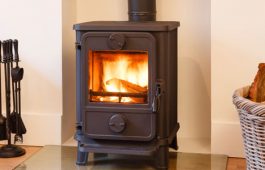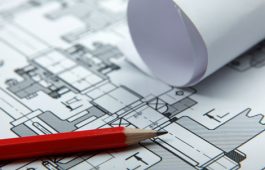Fireplace Restoration in Period and Heritage Properties

Are you the owner of a character, heritage or period property or have recently purchased one and are setting out to turn it into your dream home? You will most likely be considering restoration work and, amongst the tasks will likely be a fireplace restoration. Fireplaces are the focal point of any room, so you’ll want to make it look its best, or even become a talking point with friends and family. Whatever the situation, your first considerations will begin with the current state of the fireplace and chimney. In some cases, the hearth could have been boarded up, or perhaps there’s an old appliance that you wish to replace or do away with completely. In this article, we look at fireplace restoration in period and historic properties, offer some helpful tips and provide information on how your project will result not only in a beautiful new fireplace but importantly, that it is safe and efficient.
Where to start with your fireplace restoration
Whether or not you are preserving or recreating the fireplace, the first action must be an inspection by professionals like Billing Chimneys. If a fireplace and its chimney are not properly maintained then it will most probably be inefficient and cost more to run than necessary. More seriously, if the structure has issues, there may be leakages of dangerous gases into rooms which can result in illness and even death. Therefore, we cannot emphasise enough that chimneys should be regularly swept and inspected.
Following sweeping, an inspection of the fireplace and the flue, or flue lining will show up any problems. This will ensure that any costs incurred in bringing the structure up to standard can be accounted for in your project’s budget from the start. At Billing, we use state-of-the-art CCTV, illuminated by LED lighting and using video recording. Any issues can be spotted during the inspection and on further checking of the video. Once your chimney has been swept, the flue and fireplace inspected and any repairs made, you can go ahead with your project.
In addition to the safety factor, there are advantages to calling in professionals at the start of your fireplace restoration project. Heritage and period properties could be listed buildings, be situated within conservation areas, within areas of outstanding natural beauty or combinations of the three. In these cases, building consent and planning permissions may be required. A competent chimney specialist will be able to advise on any restrictions and regulations and can advise you whether they apply to your property and the proposed project.
Starting your fireplace restoration project
Should the original fireplace have been stripped out before bricking or boarding up, then you can try to find out what the original fireplace looked like. Are there similar houses in the neighbourhood? You could ask around if anyone still has original features in their homes and if you could take a look. You could look at specialist books and magazines or there may be old photographs at your local library or archives.
If your fireplace or fireplaces have been boarded up, then it can be exciting to uncover what is behind the brick or plaster. In some cases, original features can be exposed, and this might give you further ideas for the design of the fireplace. It might also inform whether you will have an open fire or have an appliance such as a wood-burning stove installed. Victorian houses often had cast-iron fireplace surrounds and decorative tiles. These could be quite ornate. 1930s homes also used tiles often in the Art Deco style or similar which could still be intact. There are some wonderful wooden fireplace surrounds that could be renovated. If you are hoping to find something in keeping with the age and character of the house, but are disappointed once the boards are removed, then it’s possible to recreate the look. There are reproduction fireplace surrounds widely available that would suit most designs. However, should you want authenticity, then some companies supply salvaged original fireplace surrounds and furniture.
Types of original fireplace surrounds and mantlepieces found in salvage include:
- Cast Iron
- Stone
- Marble
- Tiled
- Oak beams
You may be changing from an open fire to a wood-burning stove, so you will have the option of redesigning the hearth. You might leave the bricks exposed to give a rustic look or you might want to plaster over them, creating a crisp, clean-looking alcove.
There’s a fantastic range of designs for wood burners and another option could be a double-sided stove. This works where two rooms share a chimney, and the stove is shared between the two rooms.
It is worth considering the fact that an open fire is 20% efficient at heating the room/property, whereas an enclosed freestanding stove is 80% efficient. This does not however mean that you need to sacrifice a period look as there are as many traditional style stoves available as there are contemporary.
Fireplace restoration on a budget
A simple, but effective way to restore a fireplace is with a new mantle. As mentioned above, there are some good reproduction fireplace surrounds on the market. You could find bargains at reclamation yards too. If you’re having a wood-burning stove, plastering the brickwork and painting along with a plain aperture with no mantle can be a stylish option. Whatever you decide to do decoratively, never compromise on safety, always keep the chimney swept and have regular inspections. If you’ve uncovered an old fireplace and can’t decide what to do, then Billing Chimneys engineers would be happy to offer some ideas for your restoration, including less expensive options.
Can I carry out fireplace restoration myself?
Yes, once the chimney has been swept and professionally inspected, you’ll be in a good position to decide what next for your fireplace restoration. Do remember that structural changes or adding or changing an appliance will come under building regulations and a listed building is subject to additional regulations. You will be responsible for paying all charges associated with these.
Checklist for fireplace restoration
Restoring a fireplace can create a wonderful focal point in a room and can be a fun project to undertake. Planning each stage of your project will ensure it is successful.
- Work out whether you are recreating a particular look, or restoring existing features
- Remove any boarding to discover what’s underneath
- Have the fireplace and flue inspected by an experienced chimney company like Billing Chimneys
- Does the work need any permissions from the local authority, if so start an application early
- If having an appliance, research makes and models to find the best for your room size and overall design scheme
- Set your budget
- Book your installation
- Carry out the decoration if doing it yourself.
- Light the fire
- Enjoy your beautifully restored fireplace
If you keep safety at the core of your project and take time over the choices you make, your beautifully restored fireplace will give you years of pleasure and provide a cosy focal point in your home.




